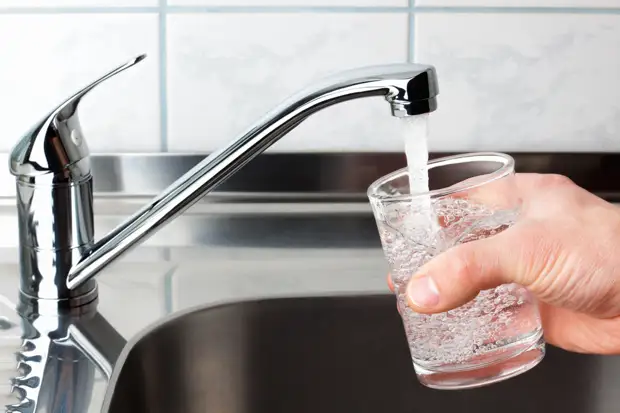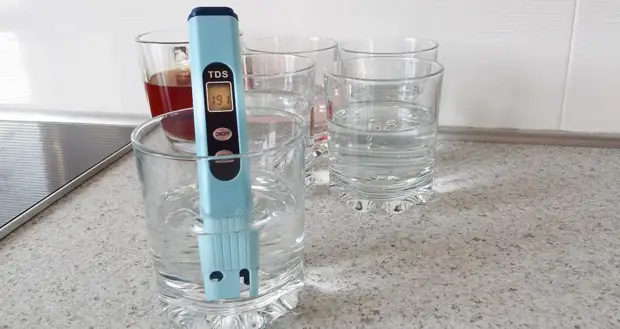In recent years, they are increasingly spoken and write about the quality of water that we consume. On the one hand, this is due to commercial interests, because firms producing a variety of drinking water purification systems today apparently invisible, and they need to constantly expand the market.

On the other hand, people began to be more interested in the benefit and harmful products, including water, which contributes not only to advertising, but also frightening publications in the press and transmission on television.
Water quality can be checked, especially when it is taken from the well, spring, wells, etc. This can be done independently with the help of relatively inexpensive devices commercially available: TDS meters, PH-meter and OVP meters. Compared with this laboratory study, the data will not have such comprehensive, but it is better to have at least basic information than any. In addition, having such devices in a country house or in the country, you can control the characteristics of water from the well or well, which change over time.
So, what do these three instruments measure?

TDS-meter
TDS ( Total Dissolved Solids) is an indicator of the concentration of salts dissolved in water, and is measured in mg / l (Mg / L) or in particles per million (PPM). In the way, the TDS meter measures the level of water mineralization, which largely depends on the features Each specific region.
This is what the measurement of this level has shown in different types of water:
- in water after reverse osmosis, practically distilled, - 0-50 mg / l;
- in a clean weak-mineralized - 50-100 mg / l;
- in water from most wells and springs, as well as in bottled - 100-300 mg / l;
- in water from the reservoir - 300-500 mg / l;
- in technical water - over 500 mg / l.
The most interesting thing is that even the World Health Organization (WHO) does not give clear recommendations, which should be the level of mineralization of drinking water. Most countries have a maximum level of mineralization ranging from 500 to 1000 mg / l.
Please note that mineral water does not belong to drinking, as it is considered therapeutic and appointed with certain diseases or deviations in the work of the body. Its TDS can be up to 15 g / l (g / l, not mg / l!) And above.
PH-METER
PH (lat. Pondus Hydrogenii - "weight of hydrogen"), or hydrogen indicator, denotes the measure of hydrogen ions activity in water, which determines its acidity. If the measurements of the pH of water at room temperature give more than 7, then the water is alkaline; less than 7 - acid; If 7, then neutral.
Scientific studies have shown that human pH at birth is 7.41, that is, the liquid medium of our body is slightly alkaline. Therefore, weakly alkaline water is optimal for maintaining normal life.
However, low-quality food and water are caused by a reducing level of pH, and if it comes to 5.41, then such a value is considered critical, causes irreversible phenomena in the body and may ultimately lead to a fatal outcome.
OVP-meter
OVP (Redox potential, or Redox potential) indicates the activity of electrons that are involved in oxidative reaction reactions occurring in a liquid medium. Measured in millivoltmeters (MV). Depends on the temperature of the water, the level of pH and the amount of oxygen dissolved in water.
In the human body, the OSP ranges from -70 to -200 mV, and in normal water its value is almost always higher than zero and in most cases is from +100 to +400.
Redox reactions are concluded in the addition or disposal of electrons. They flow in any living organism continuously and feed it with energy. The vital activity of all living beings is due to the intensity and speed of such reactions that also provide regeneration of damaged cells.
From school, we know that the body of a person by 70-80% consists of water (with age, this amount decreases). Finding into our body, drilled water takes the electrons in cells, as a result of which its biological structures are subjected to oxidation and gradually collapse.
In the desire to return to its potential, the body has to spend a lot of energy, resulting in its wear and aging, and the vital organs are worse function. However, if the OVP drinking water is close to the OVP internal environment of the human body, then cell membranes do not have to spend its electric potential, and the water itself will be absorbed better.
Thus, the lower the OVP in the water consumed, the more useful for a person, and if the value of its ORP will be even lower than that of the body, it will make its energies. Maybe water with the negative value of the OSP and there is the most that in Russian folk fairy tales called "live water"?
Interestingly, the Water ORPs can change. Thus, fresh cold water from the well has an OPP 11-17, but after it stands out for several hours or boiling the value of the OVP becomes more than 100.
So, you can make some conclusions.
- The composition of the water we use for the preparation of beverages can affect their impact on our body. For example, if the water has a low pH, then tea will further reduce it, and the constant consumption of such tea will contribute to the aging of the body. If you use herbs that increase pH, it will be much more useful.
- When brewing teas and herbs, water acquires other properties, its pH, OVP, the level of mineralization (chamomile, for example, increases it four times).
- The spring water is far from always useful than the usual plumbing, as the main indicators depend on the soils through which it passes, so it should not be considered a priori better and better.
- Water is more useful to drink fresh and cold.
A source
